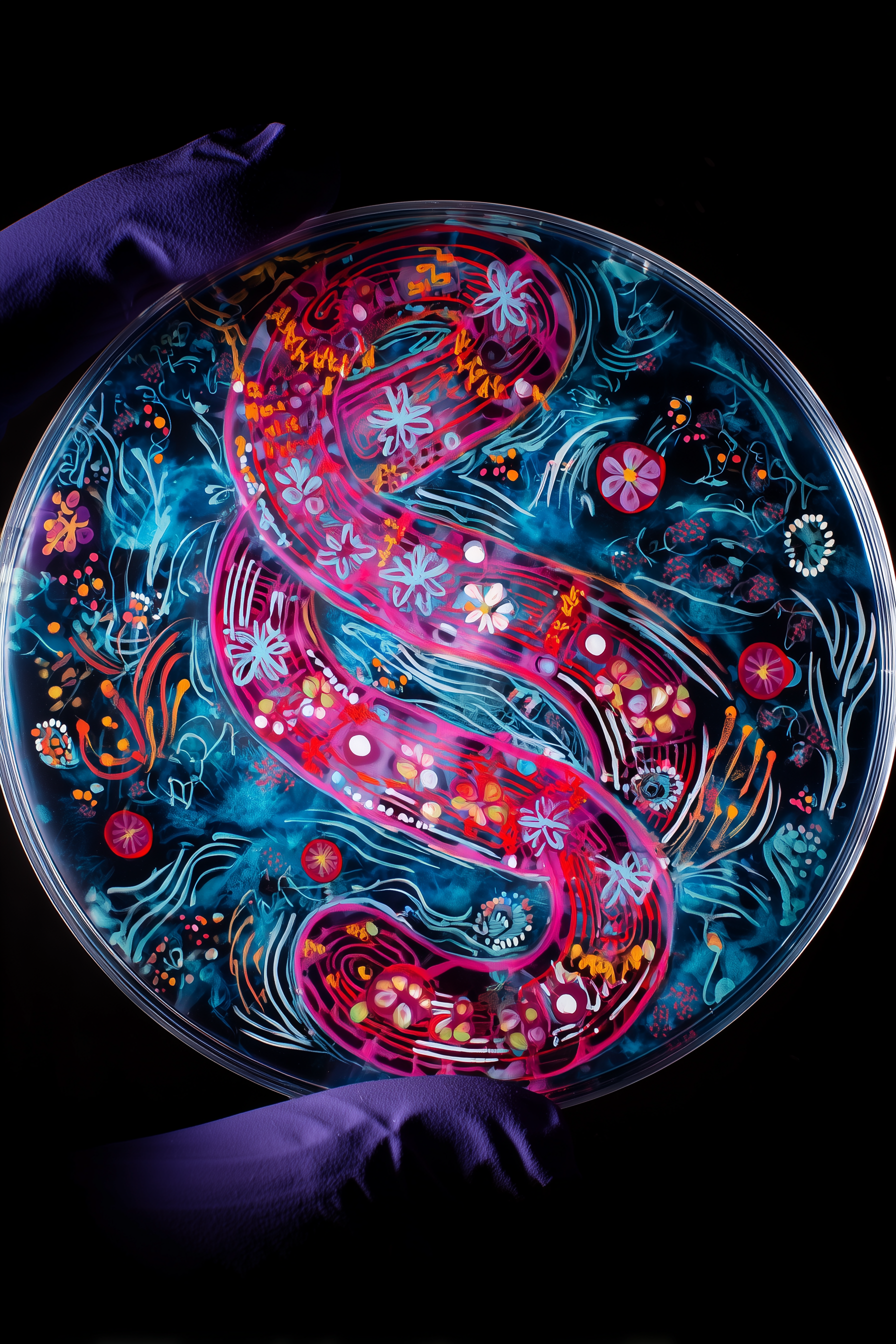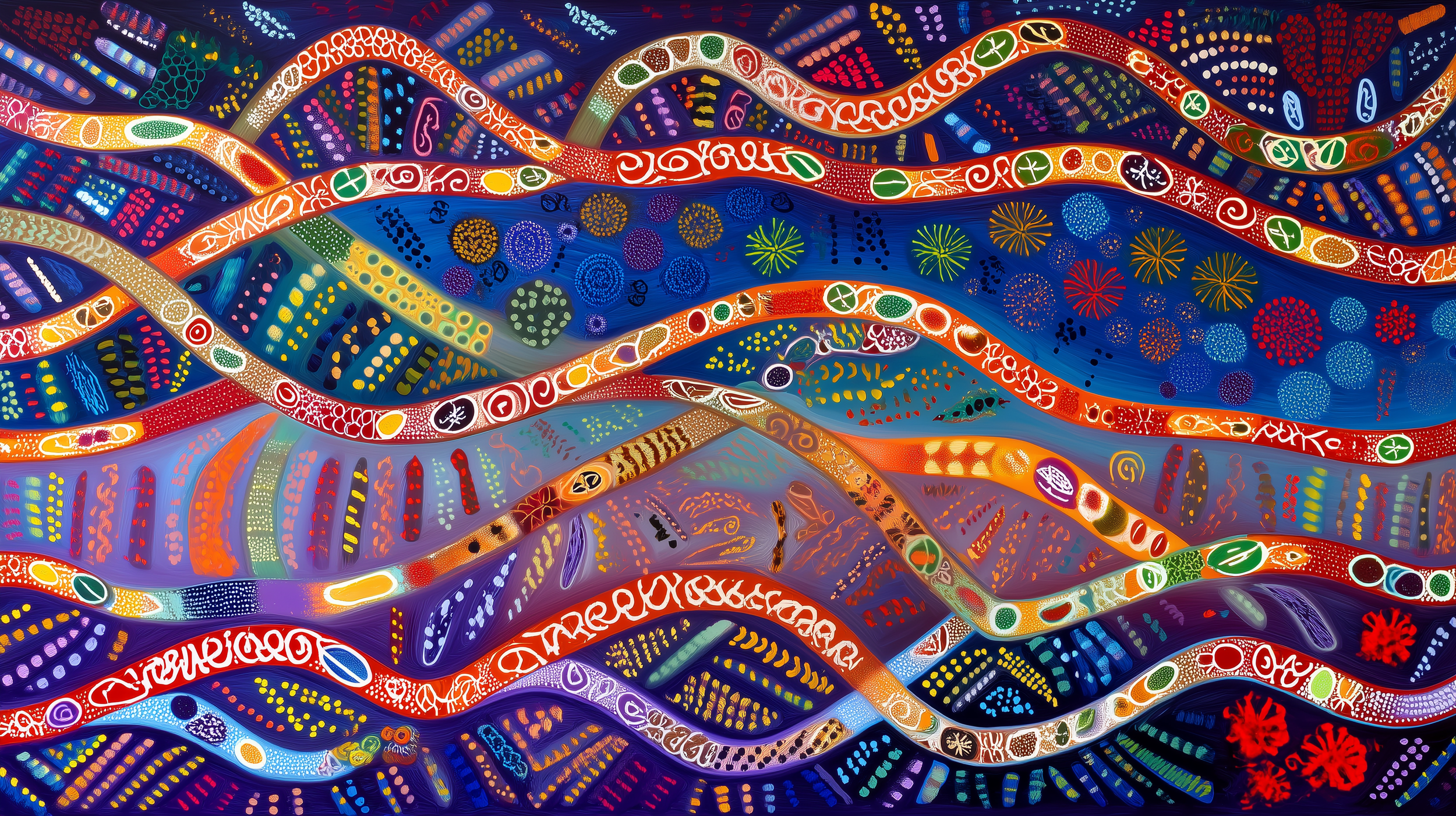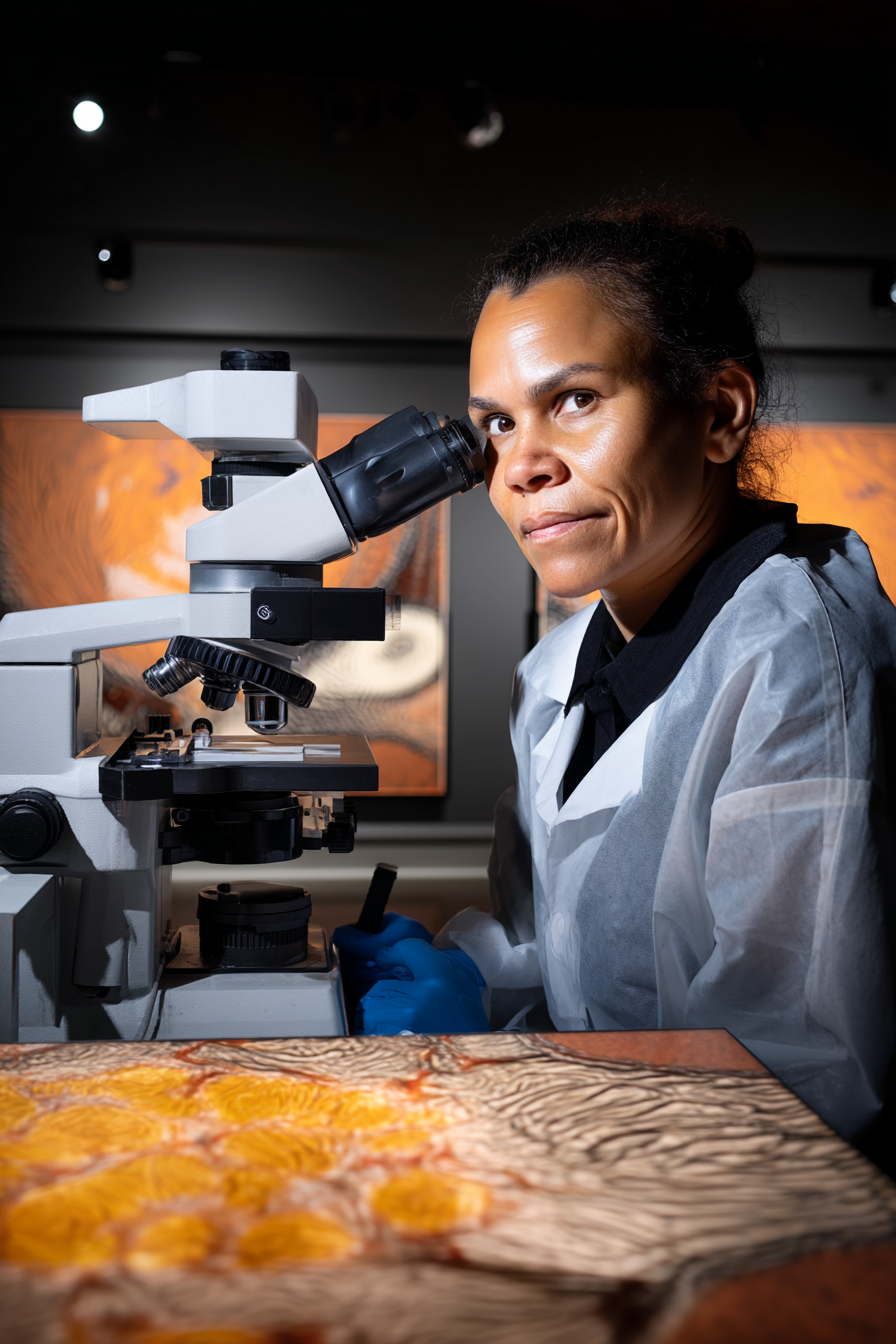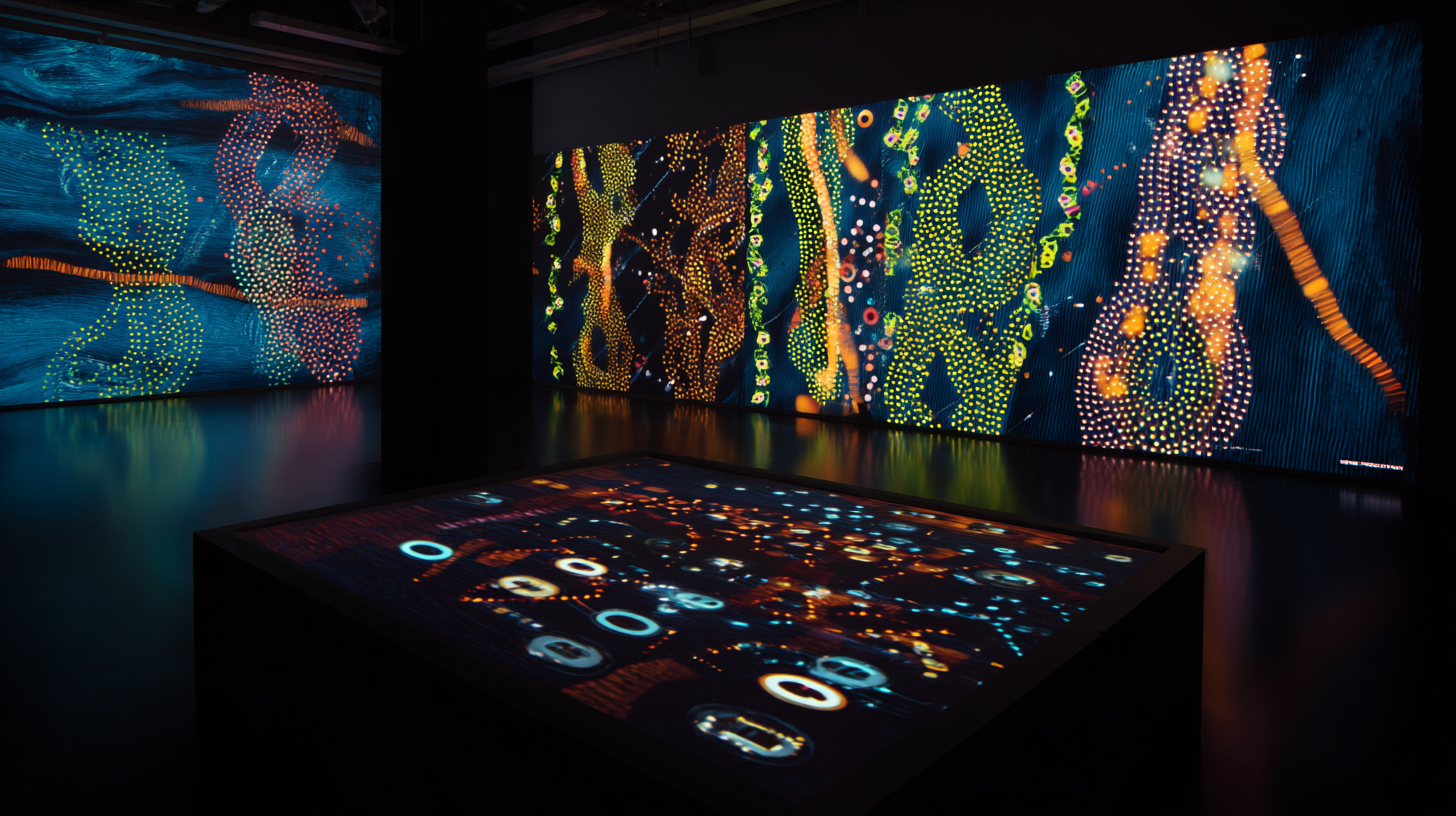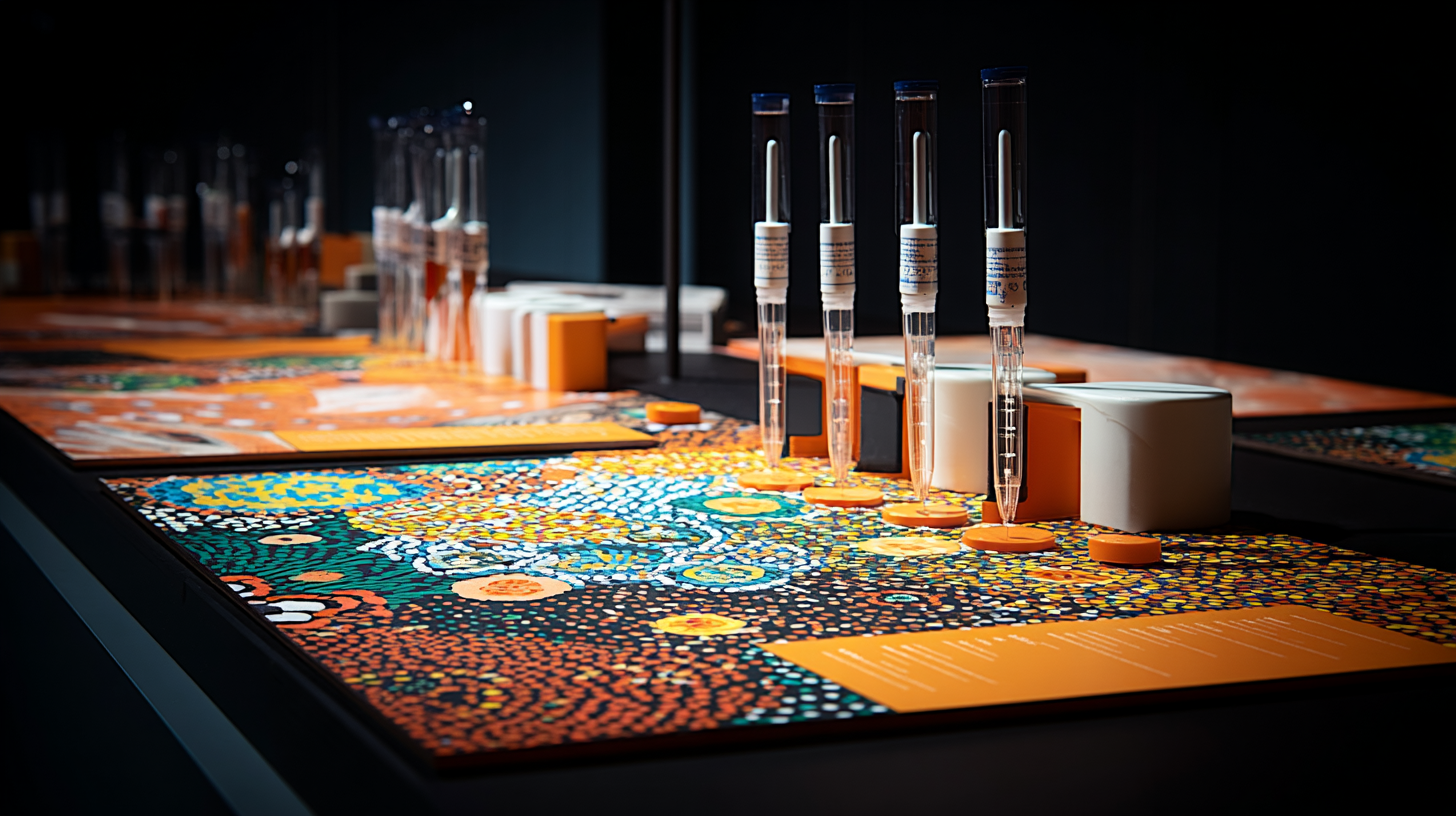Yirrkala
Yirrkala Dhunba is an artist from Northern Australia whose practice confronts how Indigenous identity is positioned in a technological age. She is part of a new generation of Indigenous artists who refuse to be framed only by heritage or tradition, instead claiming space in the speculative, the scientific, and the algorithmic. Drawing on Yolngu knowledge systems while engaging with tools such as AI data analysis and genomic editing, Dhunba produces provocative installations that challenge what Indigenous art can mean in the twenty-first century.
Dhunba
ARTIST STATEMENT
“My work exists at the intersection of culture, climate crisis, and biotechnology. In Indigenous Genomic Adaptation I explore the possibility — and the dangers — of editing Indigenous futures through AI-assisted analysis and speculative genomic intervention. It is important to recognize that gene-editing is not only a technical tool but a political weapon. Who decides which bodies are adapted to survive? My aim is to insist that Indigenous communities must not only be consulted but must lead in imagining these futures. Indigenous art today is not simply about preservation — it is about active design, resistance, and invention in the face of technological appropriation.”
Indigenous Genomic Adaptation
Indigenous Genomic Adaptation
Indigenous Genomic Adaptation
Indigenous Genomic Adaptation Indigenous Genomic Adaptation Indigenous Genomic Adaptation
Hybrid artifacts containing symbolic samples — roots, shells, pigments — reframed as genomic archives of Indigenous resilience.
hnological futures, situaating Indigenous sovereignty inside the aesthetics of advanced science while expoexpo
hnological futures, situaating Indigenous sovereignty inside the aesthetics of advanced science while expoexpo
Annotated CRISPR “edits” of genetic sequences, layered with symbolic motifs, questioning ownership of adaptation.
A workshop image where Dhunba shares speculative designs with community members, blending ancestral authority with future speculation.
Indigenous Genomic Adaptation
(2023-ONGOING)
This large-scale mixed-media installation is conceived as a speculative laboratory where Indigenous futures are tested and contested. AI-generated climate models are projected alongside stylized DNA diagrams annotated with cultural symbols. Specimen jars contain hybrid “samples”: shells, roots, pigments, and mock tissues, each standing as a metaphor for adaptation. Handmade “DIY” lab props — centrifuge shells, microscopes, culture dishes — are deliberately imperfect, signaling both empowerment and critique of corporate science. At its core, the installation speculates on genomic adaptation as a response to climate change: could Indigenous peoples re-engineer themselves to survive rising seas, toxic air, or heat? And if so, who has the right to decide? By fusing cultural aesthetics with speculative biotech, the work destabilizes assumptions of Indigenous art as static, situating it at the very frontier of what art and science might become.
5 questions
with yirkala dhunba
1. What has changed in your practice since you were first featured in EE Journal in 2023?
I’ve moved from speculative sketches to fully staged installations. What began as thought experiments is now embodied as immersive environments that invite audiences to step into the contradictions of AI and bioart.
2. How has the response been from audiences and Indigenous communities?
When EE published my interview, I was surprised by the global response. Indigenous communities saw their concerns reflected in international discussions on AI art, while tech audiences were unsettled by the questions of sovereignty and consent. That friction has been productive.
3. How do you see AI today in relation to your work?
AI is still both a collaborator and a colonizer. It amplifies possibilities but also encodes bias. My task is to expose those tensions — to show that AI can never be treated as “neutral” when it intersects with land, people, and ancestry.
4. Where do you see Indigenous Genomic Adaptation heading next?
The project is evolving toward participatory forms. I want communities to actively contribute to the datasets — deciding what knowledge can or cannot be simulated. It’s about building tools that resist extractivism.
5. Do you believe art after AI can be Indigenous?
Yes, but only if it is done on our terms. Art after AI must be accountable to Indigenous sovereignty. Otherwise, it risks repeating the same erasures that colonization has always performed.
prints on sale
A curated selection of prints from Indigenous Genomic Adaptation is available exclusively through the Art After AI pavilion. These works translate elements from Dhunba’s larger installation into collectible editions, allowing fragments of her speculative laboratory to circulate beyond the gallery. Each print carries the same tension at the heart of her practice: Indigenous knowledge meeting algorithmic speculation, resilience entangled with extraction. By acquiring a print, collectors directly support Dhunba’s ongoing research into how AI and bioart can be reframed through Indigenous sovereignty.

